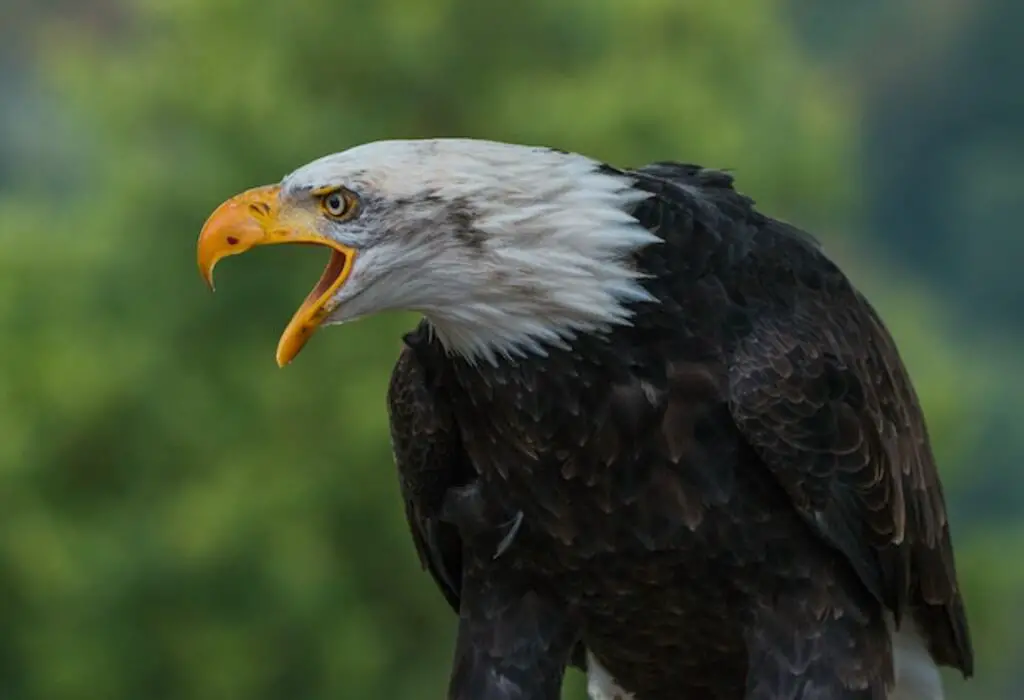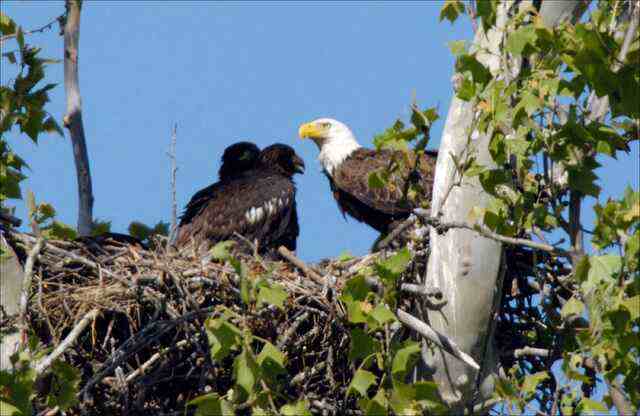Introducing “The Bald Eagle Age of Maturity: From Juveniles to Majestic”! Soar with us on a journey through the skies, discovering when these regal birds spread their wings and achieve maturity.
Short answer: It’s a feather-raising transformation, and we’ve got heartwarming anecdotes, a dash of humor, and fascinating insights waiting to lift your spirits! Ready for an avian adventure? Let’s dive in!
Table of Contents
- 1 Key Takeaways
- 2 Bald Eagle Age of Maturity: From Juveniles to Majestic
- 3 Nesting and Hatching
- 4 Growth and Development of Eaglets
- 5 Juvenile Stage and Exploration
- 6 Maturity and Sexual Maturity
- 7 Nesting and Breeding
- 8 Parenting and Raising Eaglets
- 9 Life Span and Longevity
- 10 Threats and Conservation Efforts
- 11 Symbolism and Cultural Significance
- 12 Frequently Asked Questions
- 12.1 How long does it take for a bald eagle to reach sexual maturity?
- 12.2 What are the main threats to the survival of bald eagles in the wild?
- 12.3 Are there any specific conservation efforts in place to protect the bald eagle population?
- 12.4 What is the average lifespan of a bald eagle in the wild?
- 12.5 How does the symbolism and cultural significance of the bald eagle vary across different cultures and regions?
- 13 Conclusion
- 14 Author
Key Takeaways
- Bald eagles reach sexual maturity at around 4–5 years of age.
- Courtship behavior, physical fitness, territory quality, and hunting skills are important factors in the mating process.
- Nesting and breeding patterns are crucial aspects of the bald eagle’s life cycle.
- Parenting and raising eaglets is a significant stage in the bald eagle’s life cycle.
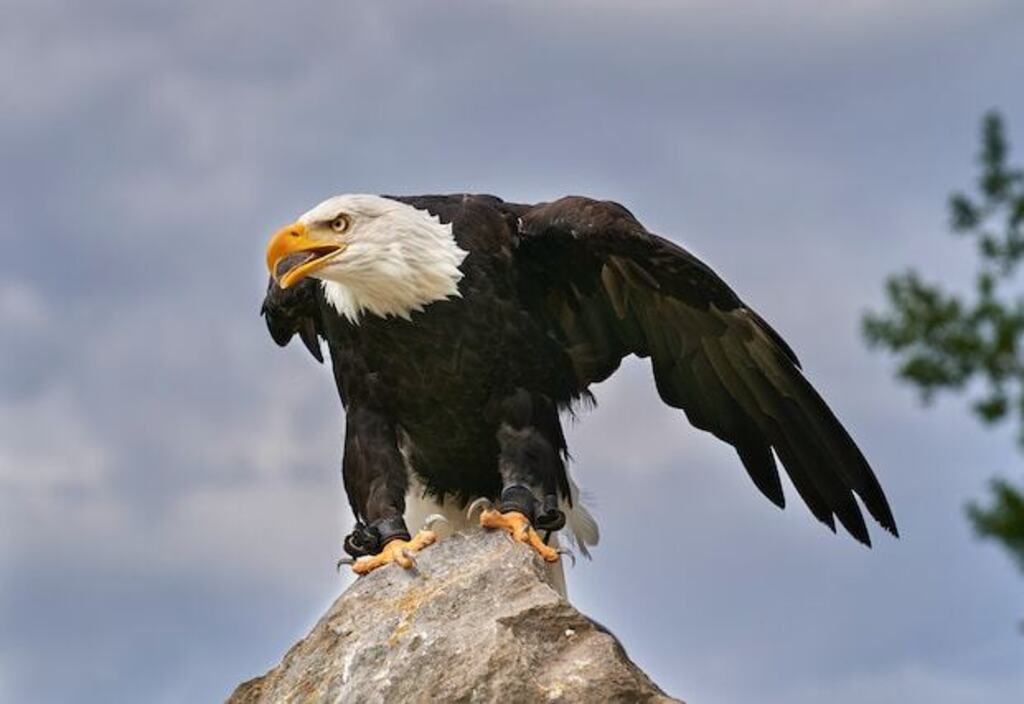
Bald Eagle Age of Maturity: From Juveniles to Majestic
The life cycle of a bald eagle begins with its introduction to the world, as it progresses through various stages of maturity.
Bald eagles have a relatively long life span, with some individuals living up to 30 years or more.
During their early years, bald eagles go through a period of growth and development, which includes learning essential survival skills such as hunting and flying.
As they reach sexual maturity, usually around the age of four or five years, bald eagles start to exhibit nesting behavior.
They construct large nests made of sticks and branches in tall trees or on cliffs near bodies of water.
These nests serve as a safe haven for the bald eagles to lay their eggs and raise their young.
This nesting and hatching process is a crucial step in the bald eagle life cycle, ensuring the continuation of their species.
Nesting and Hatching
Nesting and hatching, a crucial stage in the life cycle of the majestic avian species, encompasses the arduous process of constructing a secure habitat and the subsequent emergence of offspring.
The hatching process of the bald eagle is a meticulously timed event. After a period of incubation lasting around 35 days, the eaglets begin to break free from their protective shells.
The parents play a vital role during this process, carefully tending to the eggs and ensuring their well-being.
The nest building phase is equally significant, as the bald eagle constructs a sturdy and spacious nest, often located in tall trees near bodies of water.
This elevated location provides protection from predators and offers easy access to food sources. The nest itself is an engineering marvel, consisting of branches, twigs, and other natural materials.
Once the eaglets emerge, they are ready to embark on the next stage of their growth and development.
Growth and Development of Eaglets
During this stage, the young eaglets undergo a remarkable transformation as they gradually develop into magnificent creatures capable of soaring through the sky.
The growth milestones of eaglets are marked by changes in their physical appearance and behavior.
Feathers start to replace the downy fluff, and their wings grow stronger, allowing them to exercise their flight muscles.
Eaglets rely heavily on their parents for food during this period, with the adults providing a diet consisting mainly of fish and small mammals.
As their feeding habits evolve, the eaglets begin to explore their surroundings and practice hunting skills under the watchful eyes of their parents.
This phase of growth and development prepares them for the next stage of their life: the juvenile stage and exploration of the wider world.
Juvenile Stage and Exploration
Throughout the juvenile stage, young eagles spread their wings and explore the vast expanse of the world, like intrepid adventurers venturing into uncharted territories.
This stage is crucial for their development as they learn to navigate their environment and acquire essential survival skills.
Exploration behavior is a key aspect of their growth, as it helps them understand their surroundings and identify potential food sources.
In addition to exploring, young eagles also begin to develop their hunting techniques during this stage.
They observe their parents and other adult eagles, learning how to swoop down on prey with precision and agility.
This period of exploration and skill acquisition sets the foundation for their future success as mature eagles.
As they approach maturity and sexual maturity, eagles undergo significant changes in behavior and physiology, marking the transition into the next phase of their lives.
Maturity and Sexual Maturity
Maturity in bald eagles is marked by significant physical changes and a plumage transformation.
As they reach sexual maturity, bald eagles undergo a series of physiological changes, including the development of their characteristic white head and tail feathers.
Courtship rituals play a crucial role in the pairing of bald eagles, with elaborate displays and aerial acrobatics often observed as part of the mating process.
Physical Changes and Plumage Transformation
The physical changes and plumage transformation in bald eagles are a remarkable spectacle that captivates observers.
As bald eagles mature, they undergo a series of physical changes that reflect their transition from juveniles to adults.
One notable change is the transformation in their plumage. Juvenile bald eagles have predominantly brown feathers, while adult bald eagles have a distinctive white head and tail, with dark brown body feathers.
This transformation occurs gradually over a period of four to five years, with each molt revealing a greater resemblance to the iconic adult plumage.
In addition to the plumage transformation, other physical changes occur during this maturation process.
The beak and eyes of juvenile bald eagles change from a dark color to a vibrant yellow as they reach adulthood.
Their talons also grow larger and stronger, enabling them to efficiently catch and carry prey.
These physical changes and plumage transformation serve as important indicators of maturity in bald eagles.
They signify the eagle’s readiness to engage in courtship rituals and pairing, which will be further explored in the subsequent section.
Courtship Rituals and Pairing
During the process of reaching adulthood, bald eagles engage in courtship rituals and form pairs, showcasing their readiness for reproduction.
Courtship behavior in bald eagles involves a series of elaborate displays and vocalizations.
To attract a mate, eagles engage in aerial displays, where they perform acrobatic flights together, often locking talons and spiraling towards the ground before separating.
They also engage in sky dances, where they soar high in the sky, performing synchronized movements.
Mate selection in bald eagles is based on several factors, including physical fitness, territory quality, and successful hunting skills.
Once a pair is formed, they exhibit strong pair bonding through mutual displays of affection, such as touching beaks and preening each other’s feathers.
These courtship rituals and pair formations ultimately lead to the next stage in the bald eagle’s life cycle, nesting and breeding.
Nesting and Breeding
Nesting behavior and breeding patterns are important aspects of the bald eagle’s life cycle.
Bald eagles typically reach breeding maturity at around four to five years of age.
Breeding habits vary depending on the region, but most pairs engage in elaborate courtship rituals that involve aerial displays and calls.
Once a pair has formed, they will construct a large nest made of sticks and lined with softer materials such as moss or grass.
These nests are often built high in trees near bodies of water, providing a safe and secure environment for raising eaglets.
Bald eagles are known to be monogamous and will typically return to the same nesting site year after year.
This nesting behavior ensures the continuity of the species and sets the stage for the next phase in the bald eagle’s life cycle, parenting and raising eaglets.
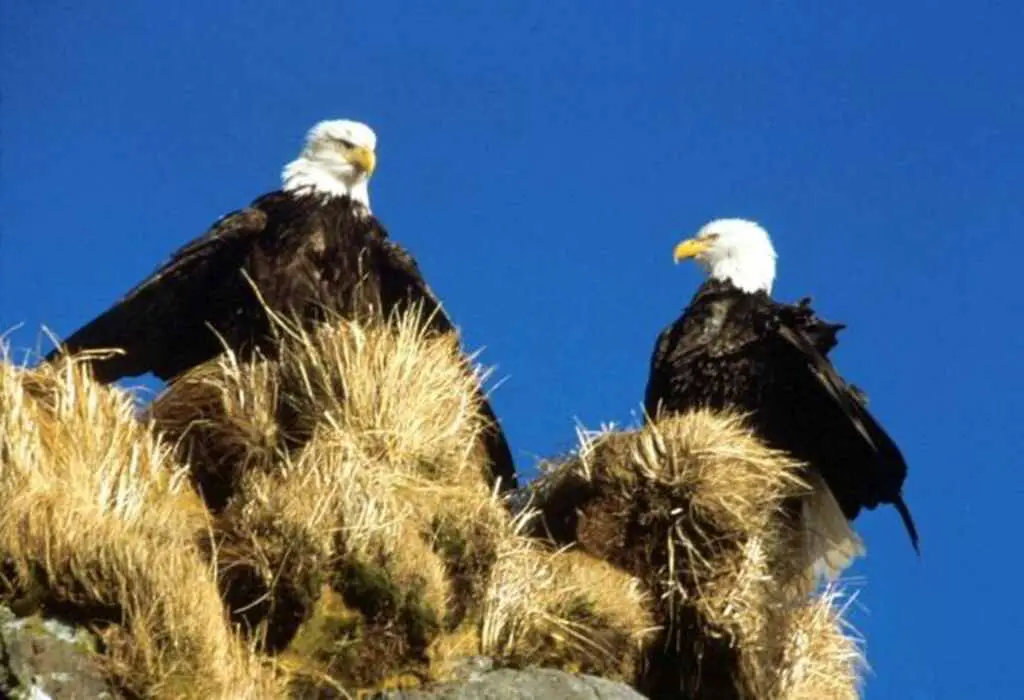
Parenting and Raising Eaglets
Parenting and raising eaglets is a crucial stage in the life cycle of bald eagles, as they invest significant time and effort in nurturing their young to ensure their survival and successful integration into the population.
Bald eagles exhibit strong parental care, with both the male and female participating in incubating the eggs and raising the eaglets. The parents take turns keeping the eggs warm and protecting them from predators.
Once the eaglets hatch, the parents continue to provide for them by hunting and bringing them food.
As the eaglets grow, the parents gradually teach them essential hunting skills, such as how to catch fish and small mammals.
This process allows the young eagles to develop the necessary skills to become independent and self-sufficient.
Transitioning into the subsequent section about ‘life span and longevity’, the parenting and raising of eaglets ultimately contribute to the long-term survival of the bald eagle population.
Life Span and Longevity
As time passes, the majestic symbol of freedom gracefully weathers the storms of life, spreading its wings wide and soaring through the sky, embodying the remarkable longevity and resilience of the bald eagle.
The life expectancy of a bald eagle is influenced by various factors. On average, these iconic birds can live up to 20 years in the wild, although some have been known to survive for over 30 years.
Factors affecting their longevity include genetic predisposition, availability of prey, environmental conditions, and exposure to contaminants such as pesticides and heavy metals.
Furthermore, injuries and diseases can also impact their lifespan. Understanding these factors is crucial for ensuring the conservation of this magnificent species.
Transitioning into the subsequent section about threats and conservation efforts, it becomes evident that despite their remarkable resilience, bald eagles still face numerous challenges.
Threats and Conservation Efforts
Human activities and environmental changes have posed significant threats to the survival and conservation efforts of the iconic symbol of freedom, necessitating urgent action to protect and preserve their population.
The threats to bald eagle habitat include habitat destruction due to urbanization and deforestation, pollution of water bodies, and disturbance from human activities such as boating and recreational activities.
These factors have led to a decline in suitable nesting sites and a decrease in prey availability.
However, there has been a commendable involvement of communities in conservation efforts.
Local organizations and individuals have actively participated in habitat restoration projects, nest monitoring programs, and public awareness campaigns.
Their dedicated efforts have contributed to the recovery and conservation of the bald eagle population.
Transitioning to the subsequent section about ‘symbolism and cultural significance,’ the bald eagle’s resilience and the efforts made to protect it highlight its symbolic importance and the deep connection people have with this majestic bird.
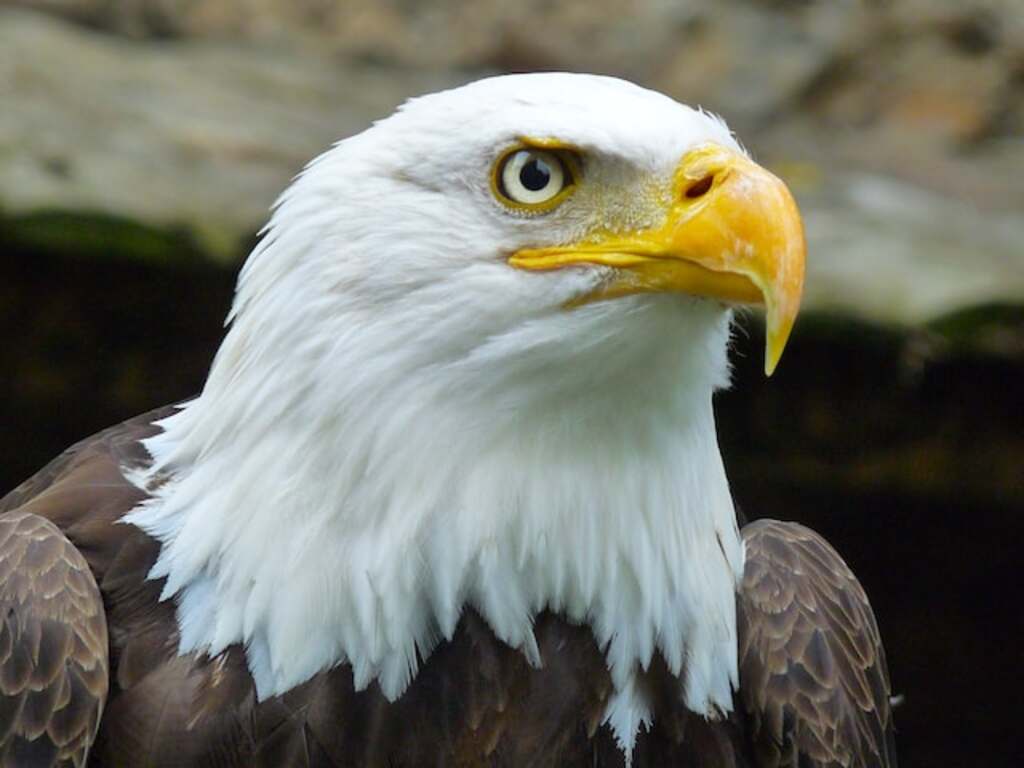
Symbolism and Cultural Significance
Bald eagles have long been recognized as national symbols in the United States, representing power, freedom, and independence. They are often depicted on the country’s official seals, currency, and government buildings.
Additionally, bald eagles hold significant cultural importance in Native American legends and beliefs, with many tribes viewing them as sacred creatures that possess spiritual qualities.
Their majestic presence and symbolic value make bald eagles an integral part of American and Indigenous cultures.
Bald Eagles as National Symbols
The significance of the bald eagle as a national symbol extends beyond its portrayal on various forms of national insignia. The bald eagle’s status as a symbol of freedom and strength is deeply rooted in its hunting habits and population trends.
- The bald eagle’s impressive hunting skills, with its sharp eyesight and powerful talons, embody the spirit of independence and survival.
- The recovery of the bald eagle population from near extinction is a testament to the resilience of the American people and their commitment to conservation efforts.
- The bald eagle’s ability to adapt to various habitats reflects the diversity and adaptability of the American culture.
- The bald eagle’s majestic appearance and soaring flight represent the aspirations and limitless potential of the nation.
These attributes have made the bald eagle an iconic and revered symbol, not only in official contexts but also in the hearts and minds of the American people. Native American legends and beliefs further enhance the cultural significance of this majestic bird.
Native American Legends and Beliefs
Native American cultures have rich and diverse beliefs surrounding the majestic bird known for its impressive wingspan and powerful hunting skills.
This bird, commonly known as the bald eagle, holds a significant place in Native American art and spiritual connection.
In Native American legends and beliefs, the bald eagle symbolizes strength, courage, and wisdom. It is often seen as a messenger between humans and the spiritual realm.
Native American art frequently depicts the bald eagle as a powerful and revered figure, showcasing its awe-inspiring qualities.
The spiritual connection between Native Americans and the bald eagle goes beyond physical attributes, representing a deep respect for nature and the interconnectedness of all living beings.
The bald eagle’s portrayal in Native American culture reflects the reverence and appreciation for this magnificent bird and its symbolic importance in their belief systems.
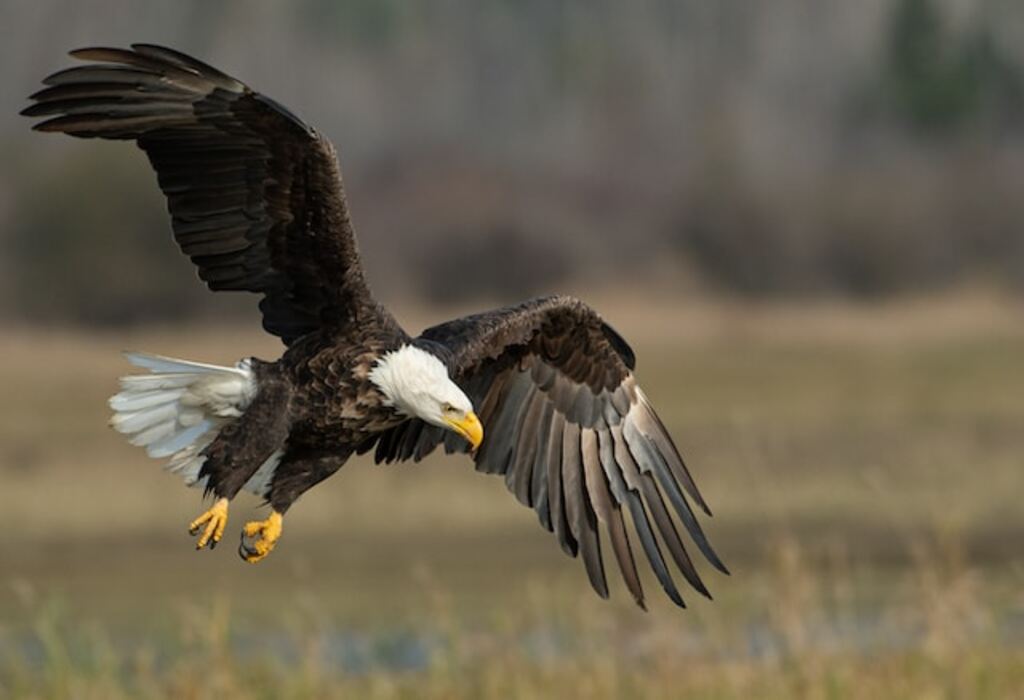
Frequently Asked Questions
How long does it take for a bald eagle to reach sexual maturity?
Bald eagles reach sexual maturity at around 4-5 years of age. Their breeding habits are characterized by monogamy, with pairs mating for life. The reproductive cycle includes courtship displays, nest building, and raising offspring.
What are the main threats to the survival of bald eagles in the wild?
The main threats to the survival of bald eagles in the wild are human impact and habitat loss. Human activities such as pollution, hunting, and destruction of nesting sites have resulted in a decline in their population.
Are there any specific conservation efforts in place to protect the bald eagle population?
Conservation efforts have been implemented to address the decline in the bald eagle population. These efforts include habitat preservation, regulation of hunting and pollution, and captive breeding programs to increase their numbers and promote their recovery in the wild.
What is the average lifespan of a bald eagle in the wild?
The average lifespan of a bald eagle in the wild is around 20 years. They typically reach sexual maturity at around 4-5 years of age, after which they can mate and reproduce.
How does the symbolism and cultural significance of the bald eagle vary across different cultures and regions?
The bald eagle holds significant symbolism across different cultures and regions, with interpretations ranging from power and freedom to spirituality and protection. Cultural rituals often incorporate the eagle as a symbol of strength and reverence.
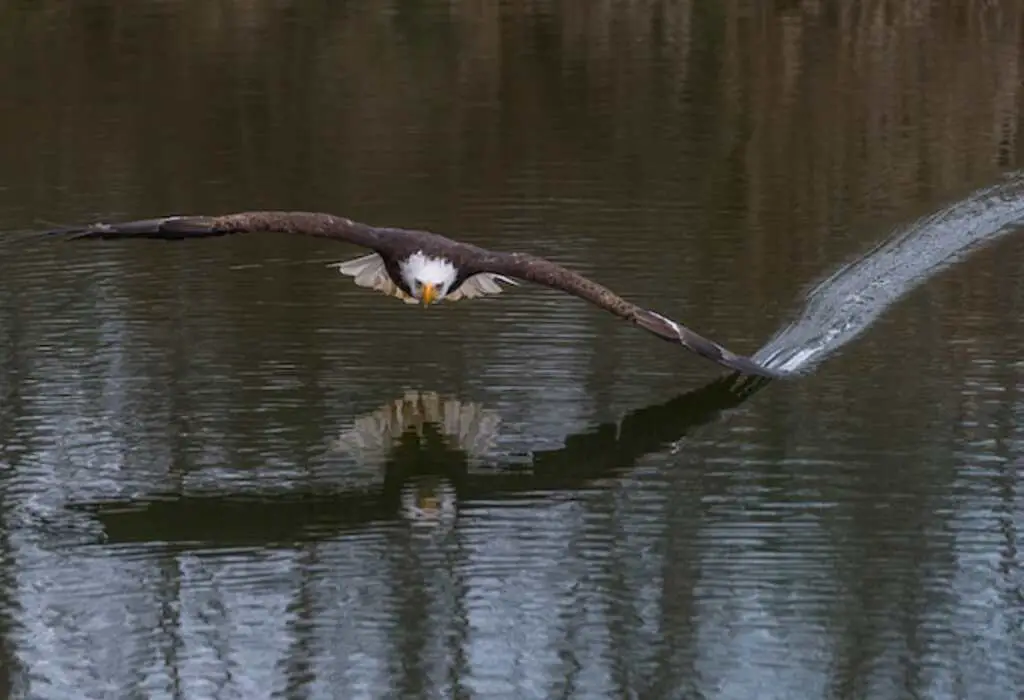
Conclusion
In conclusion, the life cycle of the Bald Eagle is a fascinating process that involves various stages of growth and development.
From nesting and hatching to reaching maturity and sexual maturity, these majestic birds go through significant changes.
One interesting statistic to note is that the average age of sexual maturity for Bald Eagles is around four to five years old.
This highlights the importance of conservation efforts in protecting these birds and ensuring their long-term survival in the wild.

